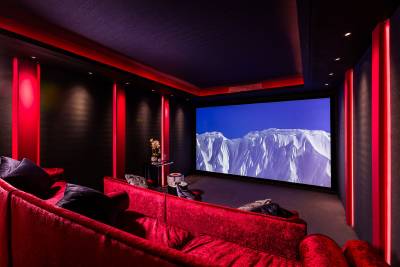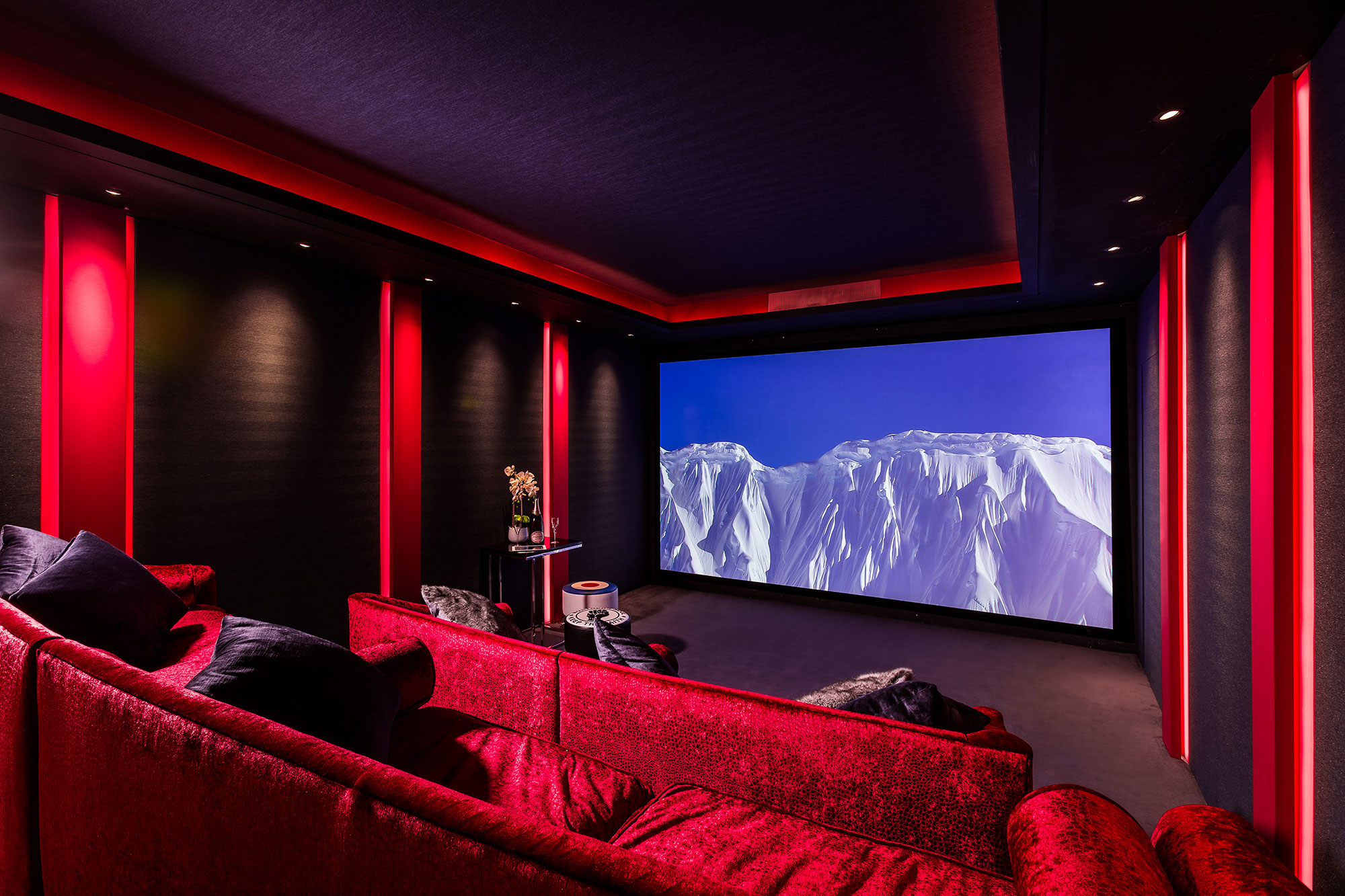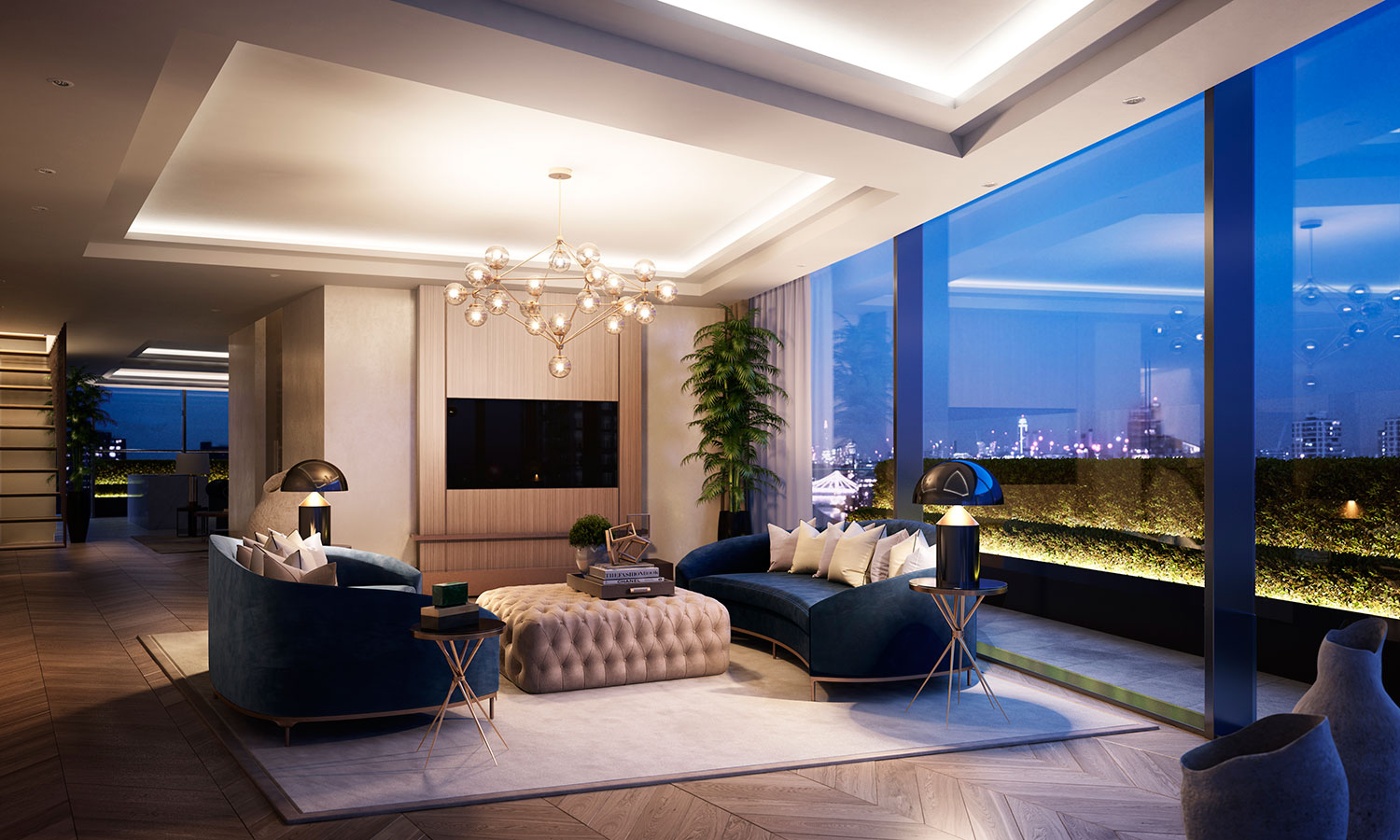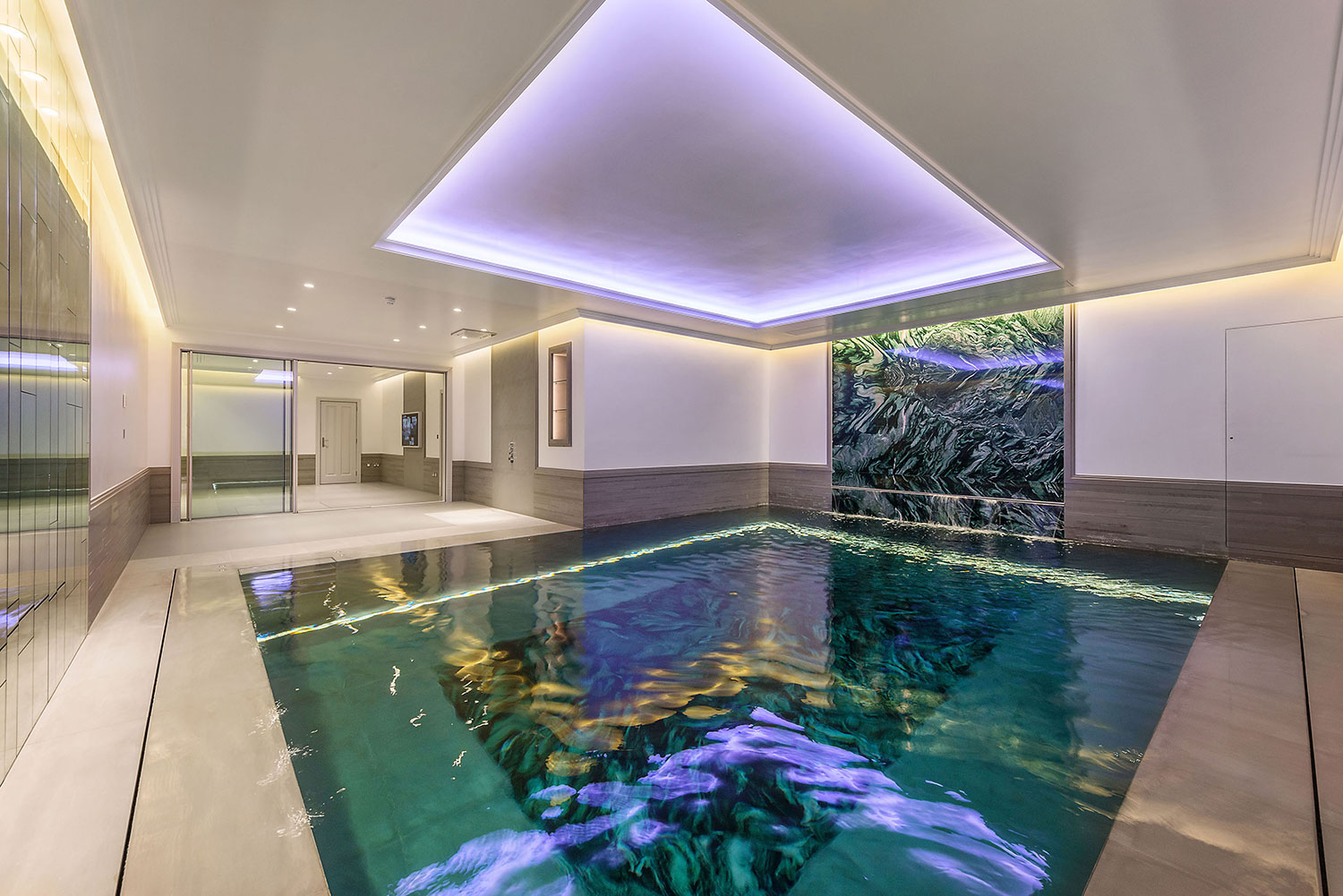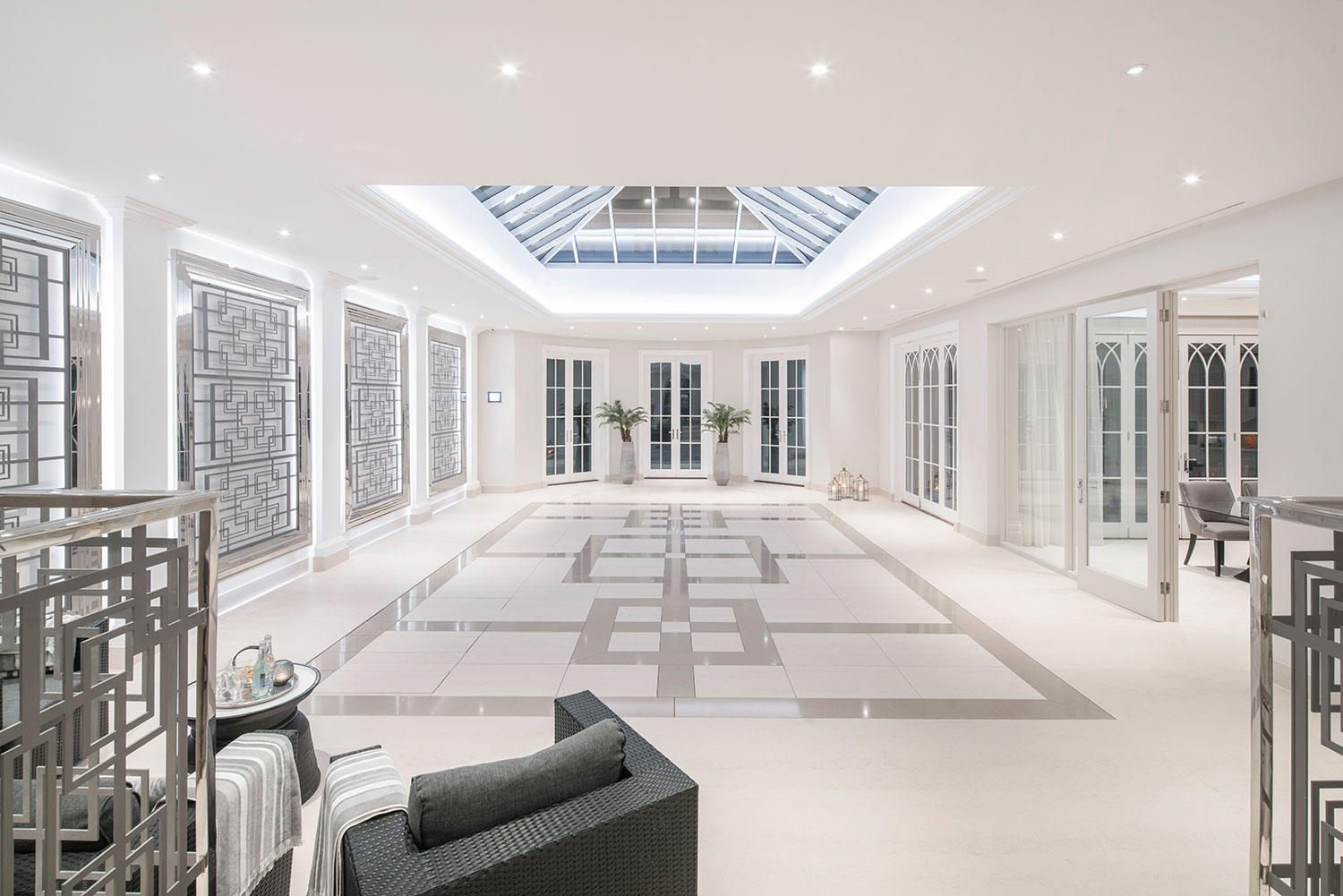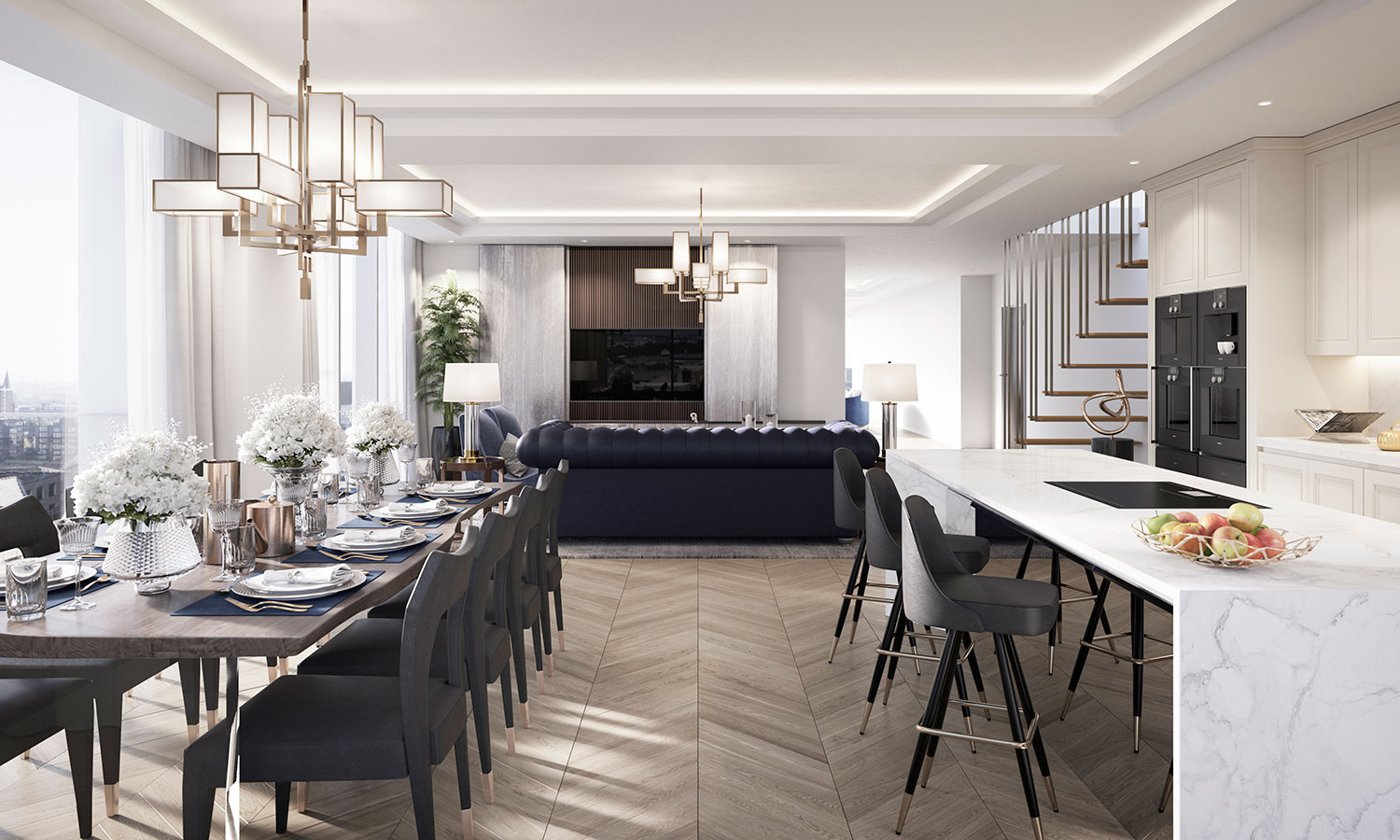The must-haves in the homes of the super-rich go in and out of fashion. Currently, TV screens are everywhere, from the shower to the walk-in wardrobe, there are golf simulators where you can play with a real club and ball (if you don’t have time to get to an actual course), while intelligent toilets that dry you, warm you and sing to you are all the rage. And nowhere is the competition to stay on top of the trends fiercer than in the world of home entertainment.
The new trends in luxury home entertainment
2nd August 2017
From home cinemas to basement fun palaces, entertainment spaces for the super-rich need to be hi-tech and all-singing and dancing. We round up some of the biggest and best
The two- or three-storey mega-basements in London’s most expensive homes are the places where the wealthy build their pleasure palaces, with gyms, spas and wine rooms now standard fare in super-prime houses. If you think ballrooms that turn into swimming pools and secret tunnel slides that transport you down to the nightclub in the basement are an urban myth, just look at some of the stock for sale in central London.
Adults, it seems, want their playrooms as much as kids — only the grown-up version has to be of the all-singing and dancing, fully immersive, hi-tech variety. “Dance floors that turn into swimming pools top the list of the most amazing home entertainment features I have seen recently,” comments Tom Tangney, a partner at Knight Frank in Kensington. “Either the floor of the pool rises up and the water gently disperses or the dance floor is lowered on to the pool. For ultra-high-net-worth individuals, it’s a clever use of space as it can double up as an extra playroom or provide an exciting entertaining space.”
Most affluent buyers today want the best and latest technology at their fingertips and are attracted by homes with the ultimate boys’ toys gadgetry
At Whitelands, a Georgian-revival mansion in Surrey, its ballroom floor can be transformed into a swimming pool in just six minutes. A similar feat of hydraulic engineering can be seen in a townhouse on Knightsbridge’s Walton Street, which is for sale at £18.5m through Strutt & Parker. From street level, this looks like a relatively normal townhouse (albeit in one of the most expensive streets in London). Below ground, at the touch of a button, a marble dance floor can become either partly or fully submerged and within eight minutes it’s ready for you to dive in.
“The super-wealthy are growing increasingly demanding when it comes to hi-tech home entertainment,” comments Robert Green, managing director of Sphere Estates. “For developers, it’s hard to keep up with technology as home cinemas, sound systems and domotics — the electronic control system that lets you run your bath before you get home or remotely control your security from any device — can receive upgrades twice a year now. Yet developers often turn to hi-tech to stay one step ahead of their rivals — and it works. Most affluent buyers today want the best and latest technology at their fingertips and are attracted by homes that offer the ultimate boys’ toys gadgetry.”
Among the Luxury London developments he is marketing is Chelsea Island, where apartments come with voice-activation technology. “Buyers will simply have to say ‘movie night’ and the curtains will close, the lights will dim and the TV and audio system will switch to cinema function. It’s all about providing the gateway for residents to interact with their homes in new and innovative ways,” says James Taylor of Hadley Property Group, the developers of Chelsea Island. Its £11.995m penthouse comes with the added perk of Bang & Olufsen BeoLab 90 Ultimate loudspeakers, which start at US$84,000 (£67,000).
The price is little deterrent to buyers at the top. Buying agent Merlin Dormer of Heaton & Partners has seen various homes lately with this latest product from Bang & Olufsen. “The price is eye-watering, but it’s the most amazing piece of sound engineering I have ever come across. Half of those who buy them are serious music lovers. The others are simply rich people who just want the best.”
You can’t view a super-prime home in London these days without stumbling across a home cinema. They are invariably sumptuous sanctuaries, with bespoke day beds and cocktail bars. But technology-wise, there is nothing quite like the one that can be seen in a basement in London’s Fitzrovia, which its creators, the tech company Cornflake, claim is the best home cinema this side of Hollywood.
“It takes home cinemas to the level of professional cinemas,” says Cornflake’s design director, Phillip Hine. “With Meyer speakers available for residential use for the first time, giving optimal audio quality, you can see films the way Hollywood producers and directors intended them — and there’s nothing else like this in Europe.” For around £230,000, which includes £120,000 Meyer speakers, a £30,000 Trinnov processor, a £16,000 screen and a £35,000 JVC Z1 projector (“the only native 4K laser source that isn’t the size of a car,” says Hine), plus all the cabling and acoustically treated décor, you too can have a cinema like this.
Until now, says Hine, the sound in home cinemas has never matched the quality of vision. This cinema, with its two sub-woofers and nine surround-sound speakers, comes with fully immersive 3D sound — think booming walls, shaking floor and the instinct to duck when a helicopter flies over head — and the latest ultra-high definition, 4K vision that is so razor sharp, your eyes alight on a flyaway strand of Scarlett Johansson’s hair; when Ed Sheeran looks out on a screaming crowd of 60,000, you think you are with him on the stage; and as adrenalin junkie skiers hurtle down a sheer rock face, you see the glint of individual crystals in the snow.
We envisage clients ‘trying’ virtual holidays and kids doing remote schooling, as well as being able to see house refurbishments without lifting a finger
Cornflake is “brand agnostic”, says Hine; it just designs the best for its wealthy clientele, which includes various celebrities and royalty (but not footballers — they want a turnkey home, rather than waiting 18 months, which is how long a technological overhaul of a home at this level can take). Such clients need to do their entertaining at home, privacy being a requisite. “Very few of our clients are tech savvy, but they expect their technology to work every time,” says Hine, who monitors clients’ systems 24-hours a day, wherever they are in the world.
Such technology is undoubtedly a status symbol and a huge source of fun — one of Hine’s clients is currently installing the first home IMAX cinema, costing around £400,000. Whether you will ever recoup such expenditure is another question. “A £300,000 cinema in a residential property is slightly whacky, really, but it’s a bit of badge snobbery. It’s impossible to quantify how much value it would add, but it would make your property a special purchase,” says James Carter-Brown of Knight Frank, who deals with many ultra-high-net-worth clients, of all ages, turning their homes hi-tech.
Such homes now come with a room that didn’t exist 10 years ago — the plant room, packed with enough hardware to service a space station. And that tech works hard behind the scenes because invisibility is crucial. “The best technology should be hidden from view,” says Phillip Hine, whose every light fitting has an IP address and each speaker is buried behind the plaster (which gives the odd illusion of singing walls).
The snag with having the latest technology is that soon it becomes the last technology. “I would be terrified about spending huge amounts because tomorrow something better will come along. Technology changes so fast that why not just buy a good quality Sonos sound system, a wireless sub-woofer and a large telly? Wireless plug and play has to be the thing,” says Knight Frank’s James Carter-Brown.
Deep in his basement, however, Phillip Hine is already working on improving the future of home entertainment — virtual reality (VR) and augmented reality (AR). “At the moment, it’s hard for multiple users to access them simultaneously and the headsets are clumsy and far from conducive to family entertainment,” Hine comments. The possibilities are limitless, though. “We envisage clients ‘trying’ virtual holidays and kids doing remote schooling, but the biggest area will be interactive art installations and clients being able to see house refurbishments without lifting a finger.”
Welcome to the wireless, hi-tech house of the future. Just don’t forget where you put the iPad.
